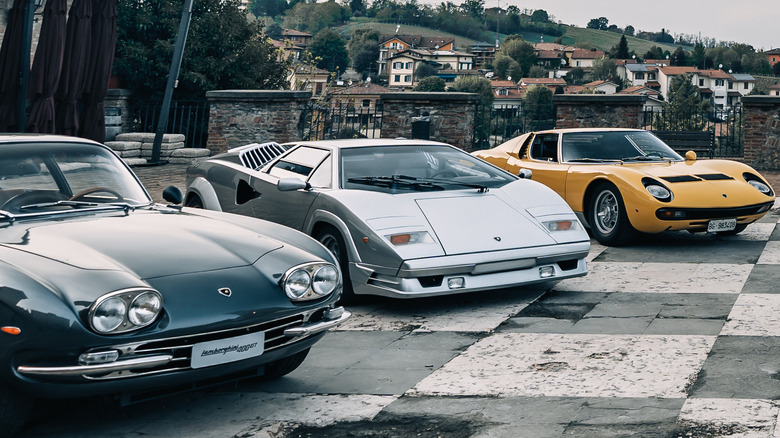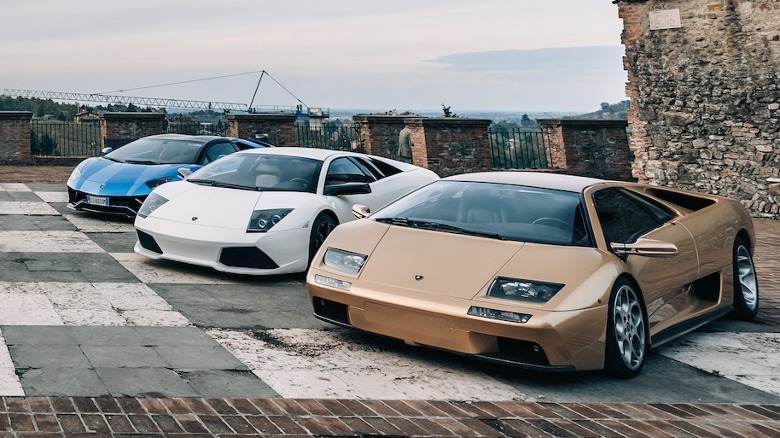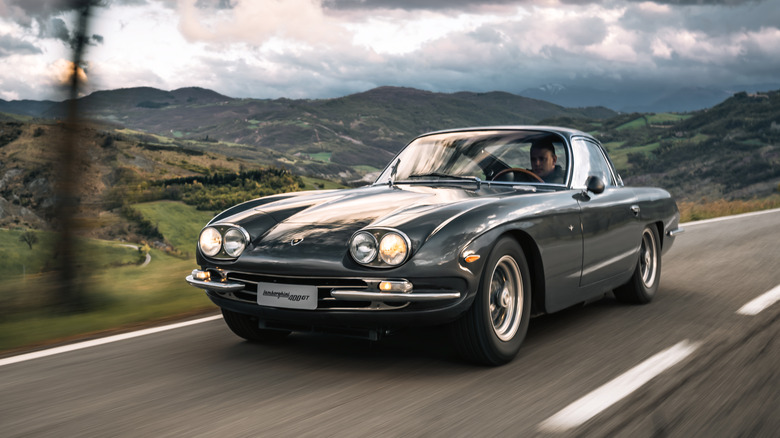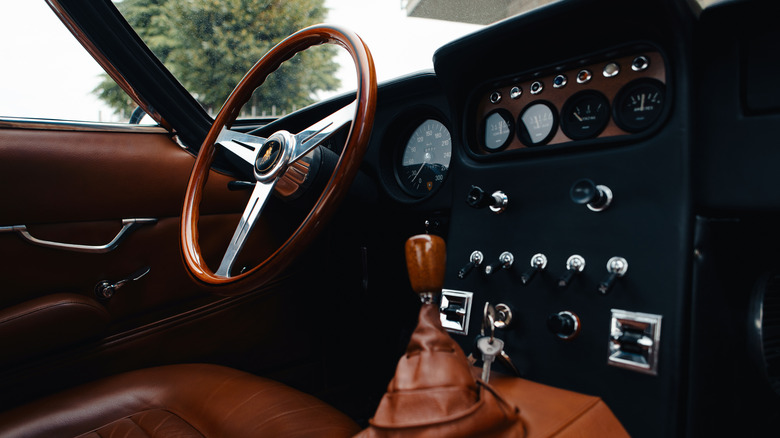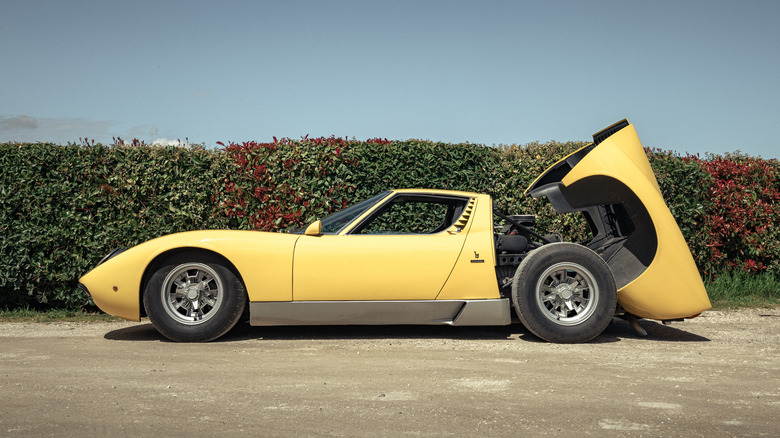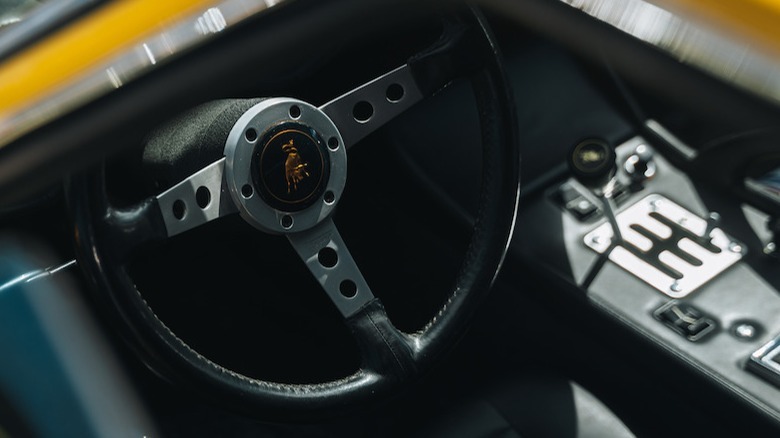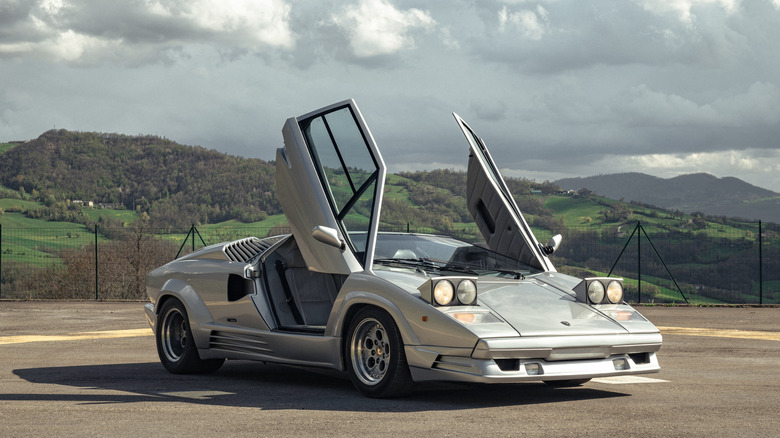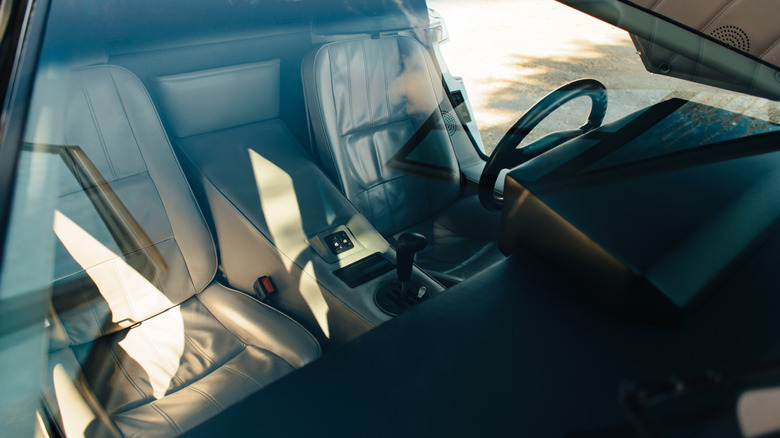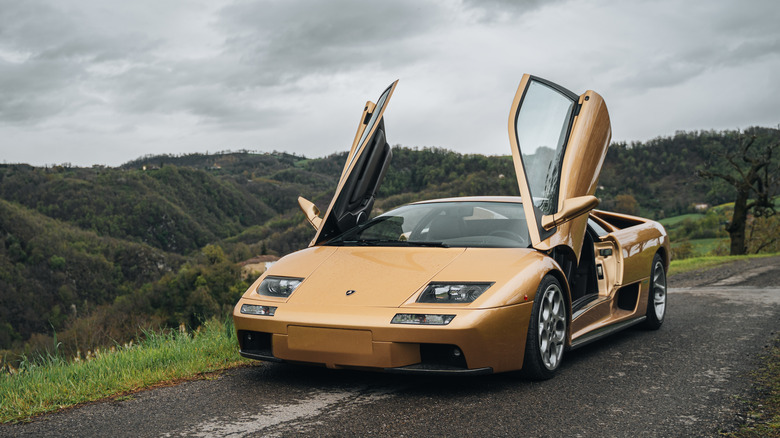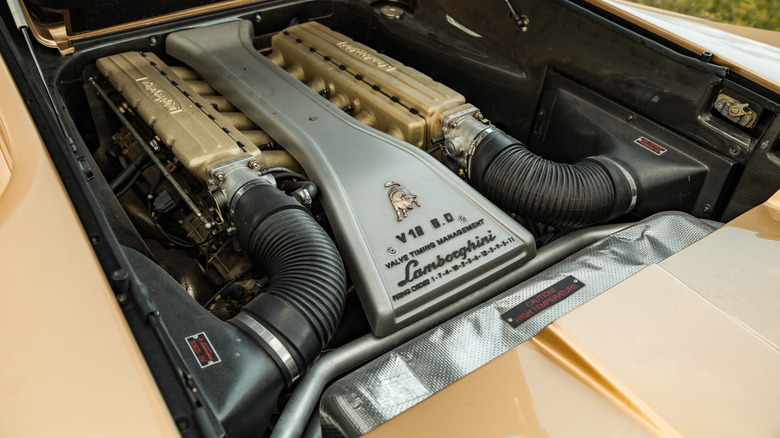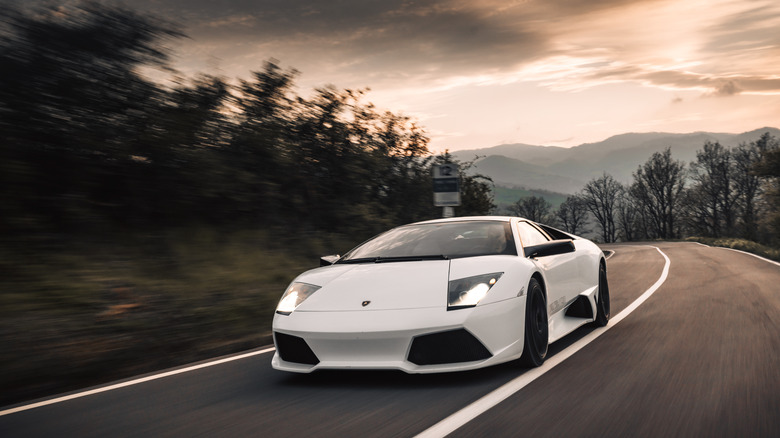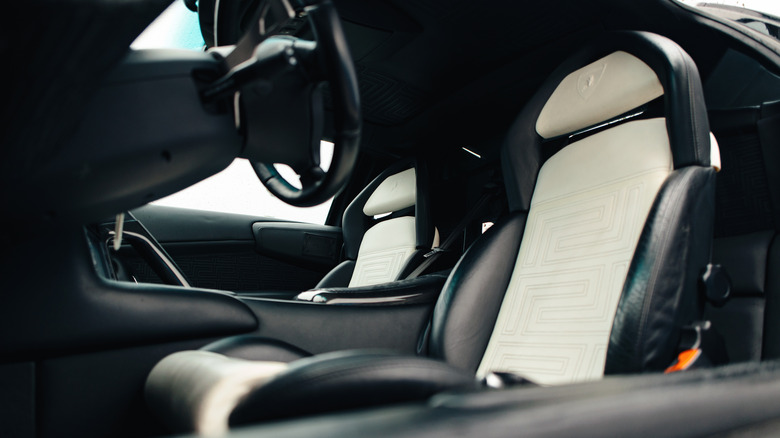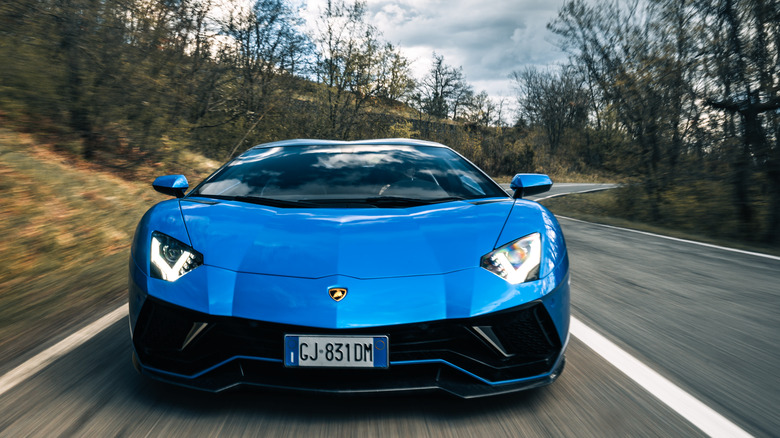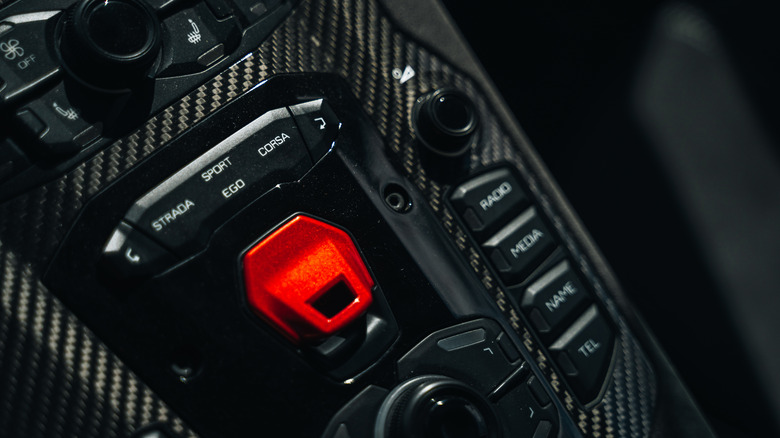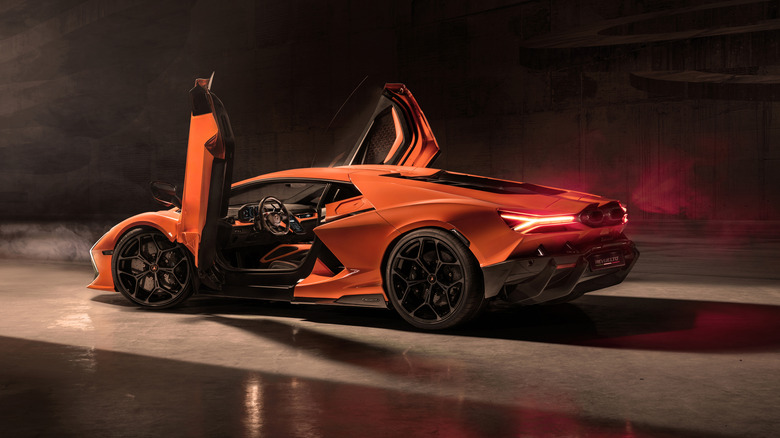Mechanical Masterclass: Driving Lamborghini's Greatest V12s At Speed
The new Lamborghini Revuelto marks the end of an era. This 1,001-horsepower, 535 pound-feet of torque supercar has all the wild styling and outrageous performance of the company's prior, top-shelf creations. It even has a V12, continuing that foundational element of the brand that dates back to 1963 — 60 years ago this month.
So what makes it different? This one comes with a battery pack, 3.8 kWh of lithium-ion cells stuffed in the center tunnel where a transmission and driveshaft would normally be. This, then, is Lamborghini's first plug-in hybrid, the first time the brand has decided that its iconic V12 needed a little help.
Not help making power, it must be said. In the Aventador, the older generation, 6.5-liter V12 put down a whopping 769 horsepower unassisted. That's plenty of thrust, but what it lacked was compliance, emissions-friendliness, and frankly market relevance in a sea of increasingly electron-powered competition.
So how did we get here? I recently had a chance to go back, all the way back to the beginning, driving a selection of historic Lamborghini V12s directly out from the museum that stands next to the company's original factory floor. Want to come along for the ride? Let's begin at the beginning.
1967 400 GT on the road
It's raining and I have no idea where the switch for the headlights is. This car, the 400 GT, was built in 1967, long before multi-function column stalks became a thing. In the center of the dashboard, five big, chunky toggles all sit in a row. I start flipping, each inch-long toggle clicking from down to up with the sort of delicious tactility not seen since the Carter administration.
The left toggle starts a fan buzzing somewhere down by my feet. That's not it. The next switch has a light bulb printed on it, so that's clearly not it either. Third time's the charm. Flipping this starts a motor somewhere behind the dash humming and the windshield wipers in motion.
I can't help laughing as the two wipers start shakily sweeping left and right. Not only are the hardened blades doing nothing to improve my visibility, at their greatest extent they only reach half-way up the windscreen. I decide to make do without.
Now to be totally fair, the 400 GT was not exactly Lamborghini's true first road-going V12. That was 1964's 350 GT. The 400 GT was its successor, but it's largely the same car but with a bit more displacement (3.9-liters up from 3.5) and, optionally, 2+2 seating.
1967 400 GT interior
While the 400 GT shares virtually everything with the 350 GT, it has little in common with Lamborghini's most notable cars to come. For starters, that V12 is mounted up front, stretching ahead of a roomy and comfortable (even by 1967 standards) cabin. This is a gran turismo, a real one, not a PlayStation game. The 400 GT was designed for big speed over big miles with big comfort, very different from the radical stuff we'll sample in a moment.
As such, it's easy to drive. The V12 runs smoothly and sweetly, the shifter bundled in its oversized leather shift boot moves cleanly (if you don't rush it), and even the brakes and clutch are predictable and smooth — through that middle pedal does require a firm foot.
The V12 has virtually no torque down low, really only waking up when you're in the upper-half of its 8,000 RPM tachometer. The red line comes in at 6,500 but it'll keep on going past that, just sounding sweeter and sweeter. Off throttle, though, it's quiet and calm, more stately than sporty, and a genuinely pleasant thing to drive.
1973 Lamborghini Miura SV
This is the car that changed everything for Lamborghini. Though the 400 GT was a respected and respectable machine in its day, the Miura changed the entire automotive landscape. It's one of the most beautiful cars of all time and driving it is a radically different experience than the 400 GT.
That's despite basically the same motor, a 3.9-liter V12. Here, though, it's tucked in the back of the car, wedged in sideways and tuned to an inch of its life. While the 400 GT made 320 horsepower in its ultimate form, here, the ultimate form of the Miura, the SV, makes 385.
And you can feel it. While the 400 GT is smooth and lovely and fast when pushed, the Miura is brash and loud and terrifying. It's also far less comfortable, sitting you low with the steering wheel placed squarely between your splayed legs, tiny pedals tucked awkwardly up under the dash.
This is where the Lamborghini V12 developed the character for which it's still known today. The bull's horns were starting to grow.
1990 Countach 25th Anniversary
The Miura SV was the end of the line for that legendary supercar and the Countach 25th Anniversary was the final edition of its iconic successor. The Countach was powered by evolutions of that same V12, growing to 5.2 liters and, in its ultimate form, making 449 horsepower.
That's a significant bump over the Miura, but equally significant is how it was installed in the car. This time it was rotated 90 degrees, transmission pointing forward, power still only going to the rear wheels. Amazingly, despite the engine going longitudinal, the Countach is actually more than eight inches shorter than the Miura.
It is, needless to say, a pretty nervous thing when pushed, but not as nervous as I was trying to find the right pedals on this car, the last Countach ever produced. Lambo's wedge has a legendarily narrow pedal box, skinny clutch and dinky throttle positioned just far enough apart to squeeze in a tiny brake pedal in between.
1990 Countach 25th Anniversary interior
The transmission is so reluctant on the Countach that you'll need to be using all those pedals frequently, coming off the clutch and then back on it again in the middle of shifts to double-clutch your way up and rev-match your way down for smoothest engagement.
The reward for a perfectly blipped downshift is a moment of ecstasy as that V12 screams up towards the extent of its 9,000 RPM tachometer. With the extra displacement, that V12 makes good power throughout much of its rev range, decidedly unhappy below 3,000 or 3,500 but serviceable. It is, however, on the other end of the scale that the life-altering power and sound begin.
The Countach sets the template for V12s to come in a lot of ways, but perhaps no more significantly than in one very significant detail: the doors. Starting here and forever going forward, Lamborghini V12 doors open up, not out.
2001 Lamborghini Diablo 6.0 SE
The Countach lived for an impressive 16 years, from 1974 to the 1990 example you see above, but its time would eventually come, the Diablo its replacement. Though iconic in its own way, the Diablo would never capture the hearts or minds of the public the way the mighty Countach did.
That's a shame, because it's much, much better to drive.
The architecture and indeed much of the foundation is the same as with the Countach. Here we have another evolution of that V12, now stretched to 6.0 liters and making 542 horsepower. Yes, we're really getting up there in power, and the Diablo would be the first of the Lamborghini V12s to bring all-wheel-drive to the mix.
2001 Lamborghini Diablo 6.0 SE engine
But not this one. This 6.0 SE still sends its power to the rear wheels through a six-speed manual shifter, gated and topped off with what looks like a double-sized pinball. Shifter action here is still strong but now things start to feel composed. You don't need to double-clutch if you don't want to, don't need to worry about mixing up the pedals. The clutch is light and, perhaps most importantly, the brake pedal is firm and responsive.
The steering is similarly sweet, the engine readily and smoothly pulls from any rev. The Diablo finally feels like a supercar you could drive all day and still be smiling at the end of it. It even has a CD player, an Alpine unit crudely wedged into an otherwise classy and racy carbon fiber dash. But, despite its relative refinement, the Diablo still has the engagement and feel of Lamborghini's earlier cars.
It's a genuine delight, especially in gold.
2006 Lamborghini Murcielago
In some ways, the evolution from Diablo to Murcielago is a much smaller step than Diablo was from Countach. Here the V12 grew to 6.5 liters from the 6.0 in the Diablo. The car dimensionally grew, too, but less than an inch. The interior, even, isn't radically different than what came before, except for one major change: Instead of the traditional, gated, too-tall shifter, you'll find buttons.
This is the first Lamborghini V12 fitted with an automated manual transmission. Just when Lamborghini finally figured out how to make a transmission sweet and easy to shift in the Diablo, they did away with the thing and introduced something awful.
The now-ubiquitous shift paddles have sprung from either side of the steering column, though they're dainty and slender here. There's no clutch, just grab first with the right paddle and ease onto the accelerator and away you go, lurching forward with all the finesse of a student driver in a 1994 Ford Tempo with a dodgy clutch.
2006 Lamborghini Murcielago interior
When it's time for reverse, heaven help you because you can't see anything out of the back. But, that gear is selected via an R button hiding way over on the left side of the dashboard. Hit that, wait for the sound of a clunk to resonate through the firewall, and you're then free to lurch your way in the opposite direction.
Otherwise the Murcielago is every bit as sweet to drive as the Diablo, far more modern looking too with the trick pop-up air intakes meant to evoke the ears of its namesake bat. The V12 sings just as well as it ever did, but that transmission is a flying fox-sized fly in the soup.
2021 Lamborghini Aventador Ultimae
Here it is, the end of the road for the unassisted V12s. Here making 769 horsepower, the Ultimae isn't quite as powerful as the 819-horsepower Essenza SCV12 that uses a variation of the same motor, but really, let's not fret over such trifling power differences.
In so many ways the Aventador feels like a titanic shift beyond the Murcielago. It starts with the interior, which is busy and cluttered but for what feels like the first time designed with a clear vision. That vision may be slightly boyish with a decided militaristic bent, but even the most jaded of peaceniks will get a smile on their face flipping up the red cover on the engine start button and bringing fire to the 6.5-liter V12.
2021 Lamborghini Aventador Ultimae engine start button
It spins with a loud whir before barking to life, but here it feels somewhat more distanced from you even though its intake is still just inches from your cranium. The driving experience itself is likewise a bit muted, feeling effortlessly fast and composed thanks to the wildly more advanced active stability systems keeping all that power in check.
But what's most remarkable is how sharp and quick the steering is here. Despite being positively massive, almost 20 inches longer than the Miura, it dives into corners with just the slightest twist of the wheel. The payback for this rapidity is a lack of feedback, but the overall effect is remarkable.
Sadly, the same unfortunate transmission is found here, vastly improved over its first implementation in the Murcielago, but still clumsy.
2023 Lamborghini Revuelto
And that all brings us to the new entry to the family, the Revuelto. It certainly looks the part, with all the ostentation of Lamborghini cars of old, though under the sheet metal it embraces electrification, too. But while it's gaining hybrid power, don't think that it's giving up anything else. This is still a 6.5-liter V12 here making 813 horsepower on its own. It's a trio of electric motors – two motors at the front, to power each of the front wheels, and a third motor at the rear above the gearbox, to power the rear wheels – that bring it up to the 1,001 horsepower total.
Perhaps more significant? A new transmission, a proper dual-clutch solution this time that may finally put Lamborghini's semi-automated woes behind it. Only time — and around $600,000 to spend on Lamborghini's newest V12 flagship — will tell on that front.
